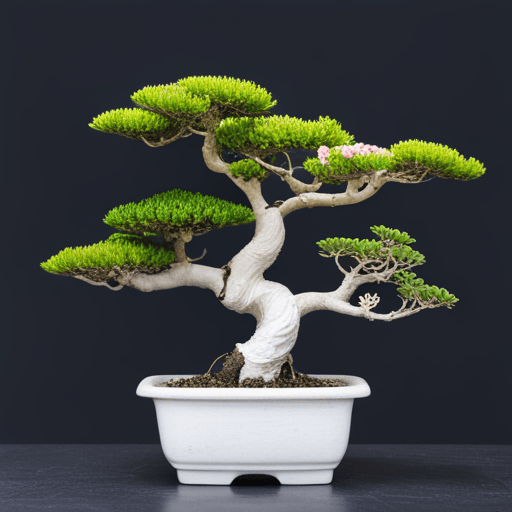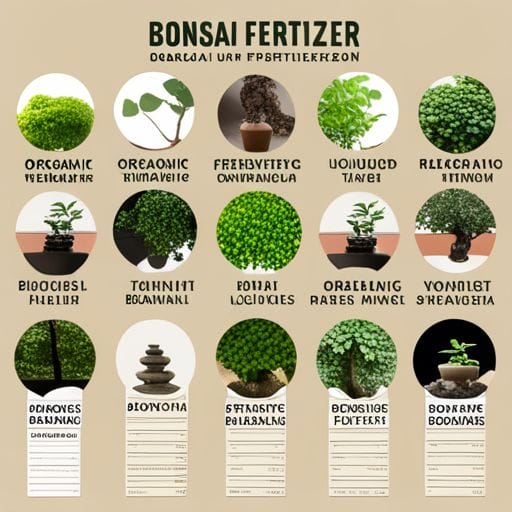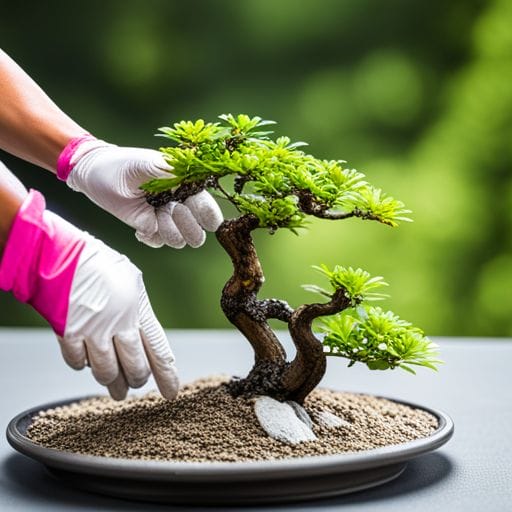Bonsai trees are miniature works of art that require careful attention and care to thrive. One important aspect of their care is choosing the right fertilizer. Selecting the best bonsai fertilizer involves considering various factors such as nutrient content, species-specific requirements, fertilizer type/form/origin, and budget.
Bonsai trees require a balanced nutrient content, including essential elements like nitrogen, phosphorus, and potassium. Different bonsai species have specific nutritional needs, with flowering trees requiring phosphorus and fruiting trees needing potassium. Both solid and liquid fertilizers can be used, with a combination of both being recommended. Organic and inorganic fertilizers are suitable as long as they are slow-release.
Budget should also be taken into account when selecting a fertilizer. This article will provide expert tips on choosing the best bonsai fertilizer, including top choices for solid, liquid, and organic fertilizers. By following these guidelines, bonsai enthusiasts can ensure the optimal growth and health of their beloved trees.
Contents
- 1 Quick Points
- 2 What to consider
- 3 Types of fertilizers
- 4 Proper application
- 5 Frequently Asked Questions
- 5.1 Can I use regular houseplant fertilizer for my bonsai tree?
- 5.2 How often should I fertilize my bonsai tree?
- 5.3 Can I use liquid fertilizer exclusively for my bonsai tree?
- 5.4 What are the signs of over-fertilizing a bonsai tree?
- 5.5 Can I mix different types of fertilizers together for my bonsai tree?
Quick Points
- Consider the nutrient content, species-specific requirements, fertilizer type/form/origin, and budget when choosing bonsai fertilizer.
- Bonsai Fertilizer Pellets by Leaves and Soul are recommended as the top choice for solid fertilizer.
- Dyna-Gro Bonsai-Pro Liquid Fertilizer is recommended as the top choice for liquid fertilizer.
– BioGold Bonsai Fertilizer is recommended as the top choice for organic fertilizer.
What to consider

When choosing the best bonsai fertilizer, there are several factors to consider, such as the nutrient content, species-specific requirements, fertilizer type/form/origin, and budget, to ensure optimal growth and health of the bonsai trees.
The nutrient content of the fertilizer is crucial for providing the necessary elements for the bonsai’s growth. Bonsai trees require 17 essential nutrients, including nitrogen, phosphorus, and potassium, in a balanced ratio. Different bonsai tree species have varying nutritional requirements, with flowering bonsai trees needing phosphorus and fruiting bonsai trees requiring potassium.
The type and form of the fertilizer, whether it is solid or liquid, can also affect its effectiveness. Fast-acting fertilizers provide an immediate boost, while slow-release fertilizers supply a sustained release of nutrients. It is recommended to use a combination of both solid and liquid fertilizers for optimal results.
Additionally, the budget should be taken into consideration when selecting a fertilizer. By considering these factors, bonsai enthusiasts can choose the best fertilizer to promote the health and appearance of their trees.
Types of fertilizers

Different types of fertilizers are available for bonsai trees, including solid and liquid fertilizers, both of which can be used in combination to provide a balanced nutrient supply. Solid fertilizers come in the form of pellets or granules and are typically slow-release, providing a sustained supply of nutrients over time. Liquid fertilizers, on the other hand, are fast-acting and provide an immediate boost to the bonsai tree’s nutrient levels.
To provide a more comprehensive understanding of the different types of fertilizers available, the following table compares the key characteristics of solid and liquid fertilizers:
| Solid Fertilizers | Liquid Fertilizers |
|---|---|
| Slow-release | Fast-acting |
| Pellets or granules | Liquid form |
| Sustained nutrient supply | Immediate nutrient boost |
| Easy to apply | Easy to apply |
| Suitable for all bonsai tree species | Suitable for all bonsai tree species |
By using a combination of solid and liquid fertilizers, bonsai enthusiasts can ensure that their trees receive both a sustained nutrient supply and an immediate nutrient boost, promoting optimal growth and health.
Learn How To Optimize Nutrient Balance For Juniper Bonsai Growth
Proper application

Appropriate application techniques should be employed to ensure the effective utilization of fertilizers for bonsai trees. Proper application plays a crucial role in providing the necessary nutrients to support the growth and health of these delicate plants.
Firstly, it is essential to carefully follow the manufacturer’s instructions for the specific fertilizer being used. This includes the recommended dosage and frequency of application.
Secondly, it is advisable to apply the fertilizer evenly throughout the bonsai tree’s root zone to ensure uniform nutrient distribution. This can be achieved by either sprinkling solid fertilizer pellets around the base of the tree or diluting liquid fertilizer and pouring it directly onto the soil.
Lastly, it is important to avoid over-fertilization, as this can lead to nutrient imbalances and potential damage to the bonsai tree.
By applying fertilizers properly, bonsai enthusiasts can provide their trees with the necessary nutrients for optimal growth and health.
Frequently Asked Questions
Can I use regular houseplant fertilizer for my bonsai tree?
Using regular houseplant fertilizer for bonsai trees may not provide the optimal balance of nutrients required for their specific needs. It is recommended to use bonsai-specific fertilizers that consider the species-specific requirements and nutrient content for optimal growth and health.
How often should I fertilize my bonsai tree?
Bonsai trees should be fertilized every 2-4 weeks during the growing season, from spring to autumn. However, the frequency may vary depending on factors such as the type of fertilizer used, the tree’s needs, and the specific instructions provided by the manufacturer.
Can I use liquid fertilizer exclusively for my bonsai tree?
Liquid fertilizer can be used exclusively for bonsai trees, but it is recommended to combine it with solid fertilizer for optimal results. The choice of fertilizer should consider the specific nutrient requirements of the bonsai species and the desired growth goals.
What are the signs of over-fertilizing a bonsai tree?
Signs of over-fertilizing a bonsai tree include leaf burn, weak growth, root damage, and yellowing or browning of leaves. These symptoms can occur when the nutrients in the fertilizer are too concentrated or when the tree is receiving excessive amounts of fertilizer.
Can I mix different types of fertilizers together for my bonsai tree?
Mixing different types of fertilizers together for a bonsai tree is possible and can be beneficial. It allows for a balanced nutrient supply, catering to the specific needs of the tree. However, it is important to follow manufacturer’s instructions and not over-fertilize.



